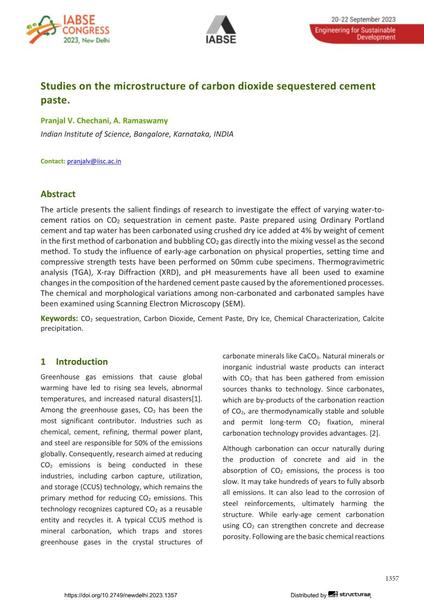Studies on the microstructure of carbon dioxide sequestered cement paste

|
|
|||||||||||
Détails bibliographiques
| Auteur(s): |
Pranjal V. Chechani
(Indian Institute of Science, Bangalore, Karnataka, INDIA)
A. Ramaswamy (Indian Institute of Science, Bangalore, Karnataka, INDIA) |
||||
|---|---|---|---|---|---|
| Médium: | papier de conférence | ||||
| Langue(s): | anglais | ||||
| Conférence: | IABSE Congress: Engineering for Sustainable Development, New Delhi, India, 20-22 September 2023 | ||||
| Publié dans: | IABSE Congress New Delhi 2023 | ||||
|
|||||
| Page(s): | 1357-1363 | ||||
| Nombre total de pages (du PDF): | 7 | ||||
| DOI: | 10.2749/newdelhi.2023.1357 | ||||
| Abstrait: |
The article presents the salient findings of research to investigate the effect of varying water-to- cement ratios on CO₂ sequestration in cement paste. Paste prepared using Ordinary Portland cement and tap water has been carbonated using crushed dry ice added at 4% by weight of cement in the first method of carbonation and bubbling CO₂ gas directly into the mixing vessel as the second method. To study the influence of early-age carbonation on physical properties, setting time and compressive strength tests have been performed on 50mm cube specimens. Thermogravimetric analysis (TGA}, X-ray Diffraction (XRD}, and pH measurements have all been used to examine changes in the composition of the hardened cement paste caused by the aforementioned processes. The chemical and morphological variations among non-carbonated and carbonated samples have been examined using Scanning Electron Microscopy (SEM}. |
||||
